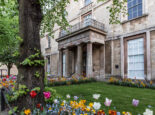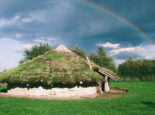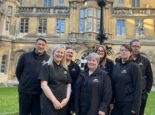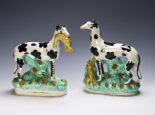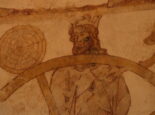Thomas Cook: from temperance to travel triumph
[prev] …in 1851, he planned low-priced trips from the north and Midlands to London’s Great Exhibition at Crystal Palace. Between 150,000 and 165,000 people travelled on these trains between June and October that year, most of them workers who might never have been able to afford to do so otherwise. His final services were treats for 3,000 children from Leicester, Nottingham and Derby.
Onto the Continent
When Paris put on a similar exhibition in 1855, it was all the excuse Thomas needed to expand his horizons even further – beyond the English Channel to mainland Europe. But despite his excellent relationship with the railways, he was unable to convince the shipping companies to co-operate in the same way. The only route available was the circuitous Harwich to Antwerp. No matter: Thomas simply came up with a grander scheme that took in Brussels, Cologne, Frankfurt, Heidelberg and Strasbourg, before ending up in Paris. He conducted the tour in person.
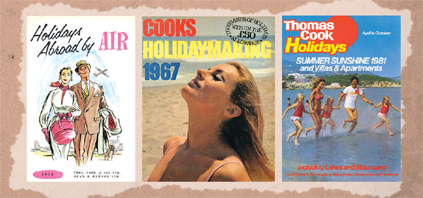 Although the company’s main connection with Peterborough goes back to the 1970s, Paul highlights that there are references to it dating from this time. ‘His very first trip to the Continent actually involved going to Peterborough by train, as they went from Harwich. So there is a reference to Peterborough from as early as 1855.’ Tours elsewhere in Europe – to Switzerland and Italy – soon followed and in 1865 Thomas felt confident enough to establish his first retail store, in London’s Fleet Street. By this time, his son John Mason Cook had joined the business and was put in charge of managing it, although there were only three other members of staff: two assistants and a messenger boy.
Although the company’s main connection with Peterborough goes back to the 1970s, Paul highlights that there are references to it dating from this time. ‘His very first trip to the Continent actually involved going to Peterborough by train, as they went from Harwich. So there is a reference to Peterborough from as early as 1855.’ Tours elsewhere in Europe – to Switzerland and Italy – soon followed and in 1865 Thomas felt confident enough to establish his first retail store, in London’s Fleet Street. By this time, his son John Mason Cook had joined the business and was put in charge of managing it, although there were only three other members of staff: two assistants and a messenger boy.
John was much more commercially-minded than his idealistic father and sought to make the company more professional and (hopefully as a result) more profitable. ‘To Thomas, there was no distinction between work and normal life,’ says Paul. ‘His office was also his home, which also happened to be a temperance hotel.’ Not that, by now, eschewing alcohol was a pre-requisite for travelling via Cook, although it’s likely that many customers were still of this mind-set. ‘He doesn’t insist on it,’ clarifies Paul. ‘But in some of his correspondence from those early tours, when he mentions people who do drink, he’s not very complementary. It’s one of the ironies of the travel industry, its temperance foundation. An all-inclusive holiday, without alcohol, probably wouldn’t sell very well today!’
The peak of Thomas Cook’s career was when he set off on the very first round-the-world tour
Father and son together proved a dynamic duo. In 1866, the first tour of the United States was run, conducted by John himself, while in 1868 hotel coupons were introduced as a means of guaranteeing prepaid hotel rooms and fixed-price meals. A further innovation was the circular note, which was effectively the first traveller’s cheque, along with Cook’s Continental Time Tables and Tourist’s Handbook of 1873, intended as a ‘cheap, concise and simple guide to all the principal lines of railway, steamers and diligences on the continent of Europe.’ It’s still published today, albeit rather more snappily retitled as the European Rail Timetable.
The first trips to Egypt and Palestine, including cruises up the Nile, something for which Thomas Cook would later become famous, came in 1869, but the peak of Thomas Cook’s career – in fact, probably of his entire life – was when he set off on the very first round-the-world tour. Up until that point, such a mammoth undertaking would have been almost impossible, but the opening of the Suez Canal and east and west coasts of the USA being linked by railway finally made it a practical proposition. He was away for 222 days and covered over 25,000 miles.
Late-Victorian expansion
When he arrived back, it was to find that John had set up an impressive new Thomas Cook & Son head office at Ludgate Circus in London. However, Thomas and John clashed over the project and the direction the company was now heading in, according to Paul. ‘Thomas tries to make travel possible, to provide the means for people to travel independently; as he put it, easier, cheaper and safer. John is happy to make travel easier, but rather than packaging it for the masses and middle classes, he is far keener to target the wealthiest strata of society such as aristocrats, politicians and members of the Royal family. ‘Essentially, he sets out to transform an over-the-counter… [cont]








